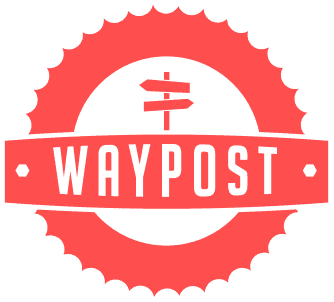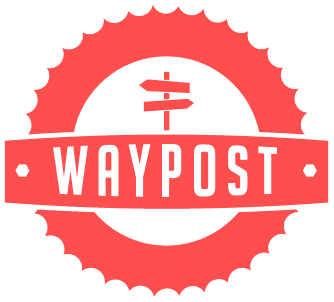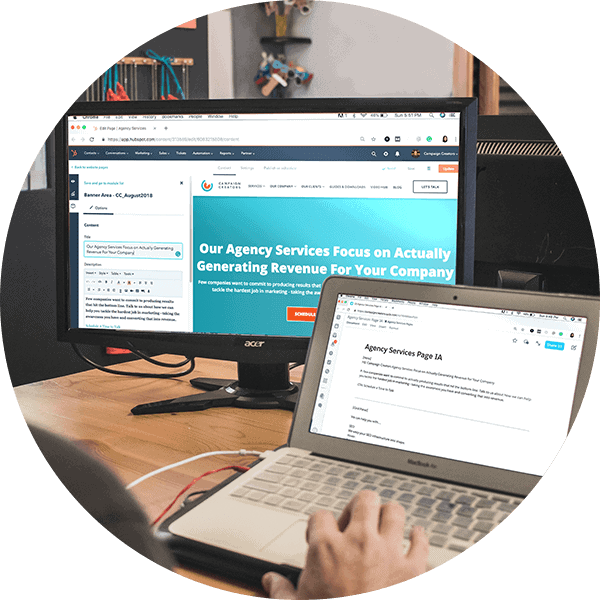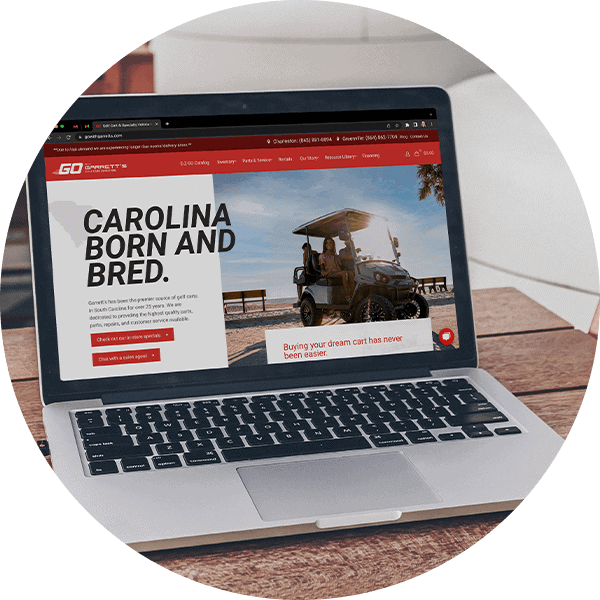
Brand Development for Manufacturers in 3 Steps
September 18, 2024
Breeze Intelligence vs. ZoomInfo and Apollo: Which B2B Database is Best for Your Sales and Marketing Teams?
October 16, 2024Advertising is only as good as the return it brings.
It needs to generate more value than it costs—simple as that. But here’s the catch: success looks different for everyone.
For e-commerce businesses, it’s pretty straightforward—they can easily track their advertising metrics and aim for a solid Return on Ad Spend (ROAS) or Return on Investment (ROI). But for lead generation clients, it’s a bit more complex. They have to factor in not just the cost of Google Ads, but also the quality of leads, the length of the buying journey, the number of follow-ups needed to seal the deal, the intricacies of their marketing and sales funnels, and finally how to track all of this in their PPC reporting.
Interestingly, even two identical companies targeting the same keywords with the same ad copy will end up paying different Google Ad rates. Why? Because it all boils down to the overall convertibility of your ads, your website, and your brand.
In a landscape this nuanced, it’s crucial to stay sharp about the cost dynamics of Google Ads within your industry and know exactly what kind of return you should expect for your ad dollars.
Aim for Industry Benchmarks
When you’re just starting out with a brand new account, reliable historical data for determining your Cost per Action (CPA) or Customer Acquisition Cost (CAC) might be as elusive as Bigfoot. So, in the early stages, it’s smart to lean on Google Ads benchmarks to guide your planning.
If your agency is a pro in your niche, they’ll likely have their own benchmarks based on past successes. But if you want a broader perspective, global industry benchmarks are your best friend.
For instance, Wordstream.com publishes industry benchmarks for all advertising platforms each year, giving you a handy cheat sheet. According to their latest report, the average cost per click (CPC) on Google Ads across all industries in 2024 is $2.69 for search ads and $0.63 for display ads. But it doesn’t stop there—each industry has its own quirks. The legal industry, for example, tops the charts with an average CPC of $6.75, closely followed by Consumer Services at $6.40.
And even within the legal world, the cost can vary wildly. A personal injury click might set you back a few hundred dollars, while other practice areas, like social security disability, could be a relative bargain at under $10 per click. Use these benchmarks as guideposts, but remember—they’re suggestions, not gospel.
Google Ads Cost & Benchmarks for 2024
On the Search Network:
| Industry | Average CPC | Average CTR | Average Conversion Rate |
| Auto | $2.46 | 4.00% | 6.03% |
| B2B | $3.33 | 2.41% | 3.04% |
| Consumer Services | $6.40 | 2.41% | 6.64% |
| Employment Services | $2.04 | 2.42% | 5.13% |
| Health & Medical | $2.62 | 3.27% | 3.36% |
| Industrial Services | $2.56 | 2.61% | 3.37% |
| Legal | $6.75 | 2.93% | 6.98% |
| Real Estate | $2.37 | 3.71% | 2.47% |
| Technology | $3.80 | 2.09% | 2.92% |
Source: WordStream.com
On the Display Network:
| Industry | Average CPC | Average CTR | Average Conversion Rate |
| Auto | $0.58 | 0.60% | 1.19% |
| B2B | $0.79 | 0.46% | 0.80% |
| Consumer Services | $0.81 | 0.51% | 0.98% |
| Employment Services | $0.78 | 0.59% | 1.57% |
| Health & Medical | $0.63 | 0.59% | 0.82% |
| Industrial Services | $0.54 | 0.50% | 0.94% |
| Legal | $0.72 | 0.59% | 1.84% |
| Real Estate | $0.75 | 1.08% | 0.80% |
| Technology | $0.51 | 0.39% | 0.86% |
Source: WordStream.com
Keywords Come with Different Price Tags
Not all keywords are created equal. For example, “plumber near me” is going to cost you more than “how to fix a burst pipe.” Similarly, “family law attorney in my area” is pricier than “how much does divorce cost,” and “accounting agency in Greenville, SC” will set you back more than “do I need an accountant to do my taxes.”
The reason? Affordable keywords tend to be informational and less competitive, while the more expensive ones are commercial and transactional—prime real estate for advertisers because they attract warmer leads and often deliver a better ROI.
But there’s more to it than just cost. Different keywords target different stages of your marketing funnel. Some attract users still in the research phase, while others pull in those who are ready to buy or convert.
Here’s a golden rule that many agree on: If you’re working with a tight budget, aim for bottom-of-the-funnel, razor-sharp keyword targeting, and stick to advertising on the search network. It’s a PPC strategy that can stretch your dollars further and bring in the conversions that matter.
How to Reduce Google Ads Cost And Improve Outcomes
A common complaint in professional discussions about the cost of Google Ads is that Google Ads has become too expensive for many businesses. That said, no other digital advertising platform is as powerful as Google. If you can relate to these feelings, here are some tips you can adopt to cut your Google ads cost:
Build a Strong Negative Keyword List
To avoid throwing money at clicks you don’t want, start with a well-researched and comprehensive negative keyword list right from the get-go. This helps ensure your ad dollars are spent wisely, especially in the early stages of your campaign.
If your budget has a bit of wiggle room, consider leaving space for testing and exploring new keyword ideas from your search terms report. But if you’re operating on a shoestring budget, make sure your negative keyword list is as airtight as possible—no room for costly mistakes here.
Downsize On Target Locations
In some U.S. states and cities, advertising can be a pricey, competitive game—no matter your industry. But don’t worry, there are plenty of cost-saving strategies you can employ to stretch your budget further:
- Focus on targeting specific radii around key areas.
- Narrow your aim to specific zip codes (just make sure you’re adhering to the targeting policies of Google Ads).
- Separate low-cost and high-cost locations into distinct campaigns to better control your budget and costs.
- Keep a close eye on your best and worst-performing locations, and adjust your bids accordingly.
- Cut out underperforming areas—especially those that have been gobbling up your ad budget without producing conversions for the past six months.
Getting creative and really understanding your competition in each area can make all the difference (to learn more about your competitors’ performance don’t forget to check out the Google Ads Auction Insights report). Smart location targeting might just be the secret weapon your Google Ads strategy needs.
Bidding Strategies
Smart bidding strategies like Maximize Clicks and Maximize Conversions tap into Google’s machine-learning powers to help you hit your goals. But there’s a catch: these strategies are fully automated, giving you minimal control over the process. Plus, they rely on a hefty amount of conversion data. If your budget is tight and you’re not generating enough conversions each month to keep the algorithm well-fed, smart bidding strategies might just drain your budget without delivering the ROI you’re after.
On the flip side, manual bidding strategies offer you more control over costs. The trade-off? They demand more hands-on work and constant attention.
Use Your Ad Copy as a Filter
Your ad copy should do more than just attract clicks—it should also act as a filter to weed out the users who don’t match your ideal buyer profile. For example, if your service is tailored specifically for commercial clients, make sure your ad copy spells that out clearly. That way, you avoid paying for residential clicks that won’t convert.
Think of your ad copy as a double-duty tool: it should not only sell your brand but also set up filters to improve the quality of every click.
Avoid High-Cost Keywords
For every high-priced keyword, there’s usually a more affordable alternative that conveys the same message.
If your average CPC is eating up your entire daily budget in one bite, you’re setting yourself up for a one-click wonder. That single click better be spot-on and ready to convert.
Alternatively, consider finding cheaper keywords that still align with your goals. This gives you some breathing room to gather valuable data and make sure your landing page and follow-up games are top-notch.
Work On Your Quality Score
Your Quality Score is like a report card for your ads, grading them on a scale of 1 to 10 based on keyword relevance, landing page quality, and historical click-through rate. The higher the score, the better your ads are expected to perform.
To boost this metric, take a closer look at your keywords to ensure they accurately reflect your landing page. Review your ad copy to make sure it aligns with both the keywords and the landing page. And of course, optimize your landing page to deliver an excellent user experience.
Change Your Landing Page
First impressions are everything—especially online. The moment a user lands on your page, they’ll decide within seconds whether to stick around or bounce. So, your landing page needs to be well-designed and laser-focused on your ideal customer.
While there are standard best practices for content, forms, and structure, your own analytics and understanding of your ideal customer should guide your final decisions.
Build better forms, craft more compelling calls-to-action, write stronger content, add relevant images or videos, and improve page load time. Your landing page should be a well-oiled machine that turns clicks into conversions.
Troubleshoot Your Sales
Your sales data and funnel should be tightly integrated with your advertising pipeline, creating a feedback loop that continuously refines your marketing efforts.
Are your advertising leads warm or cold? How many do you close each month? Which leads are the most profitable or the easiest to convert? This data is gold for fine-tuning your advertising campaigns and powering up your sales machine.
It’s equally crucial to ensure your sales team is promptly reaching out to leads and that all sales analytics are accurately recorded and stored in your CRM.
What Should You Expect in the Future?
Beyond the new tech innovations and AI advancements, one thing is certain: ads aren’t going to get any cheaper. In fact, it’s wise to anticipate that advertising costs will rise alongside inflation and increased competition.
The $50/day you were spending five years ago won’t stretch as far today. Plan to bump up your advertising budget by at least 10% annually, and never stop optimizing. The game is always changing, so staying ahead means continually adapting and improving.








